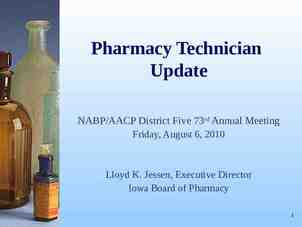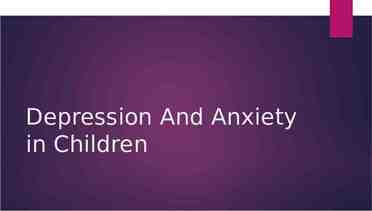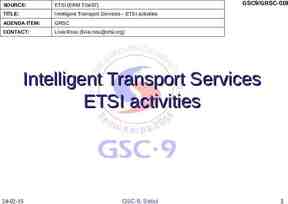AHRQ Safety Program for Mechanically Ventilated Patients Introduction
42 Slides2.46 MB
AHRQ Safety Program for Mechanically Ventilated Patients Introduction to Daily Care Processes: Evidence Behind Spontaneous Awakening Trials, Spontaneous Breathing Trials, and Head of Bed Elevation AHRQ Safety Program for Mechanically Ventilated Patients AHRQ Pub. No. 16(17)-0018-42-EF January 2017 Intro to Daily Care Processes 1
Learning Objectives After this session, you will be able to— Identify how the use of spontaneous awakening trials (SATs) and spontaneous breathing trials (SBTs) can reduce the length of mechanical ventilation and the risk of ventilator-associated pneumonia (VAP) Follow and perform the recommended SAT and SBT protocols when clinically indicated Understand the benefits of utilizing head of bed (HOB) elevation techniques Access the supporting resources for these daily care process measures AHRQ Safety Program for Mechanically Ventilated Patients Intro to Daily Care Processes 2
SATS AND SBTS AHRQ Safety Program for Mechanically Ventilated Patients Intro to Daily Care Processes 3
Complications of Sedation Suppresses respiratory drive, prolonging ventilator dependence Increases risk for delirium Impairs mobility Prolonged ventilator dependence can increase the risk of pneumonia, atelectasis, and acute respiratory distress syndrome (ARDS), among others AHRQ Safety Program for Mechanically Ventilated Patients Intro to Daily Care Processes 4
Daily Interruption of Sedatives Fewer than half of practitioners worldwide reported implementing daily interruption of sedatives1,2 – Germany – Canada – USA 34% 40% 40% 1. Tanios MA, de Wit M, Epstein SK, et al. Perceived barriers to the use of sedation protocols and daily sedation interruption: a multidisciplinary survey. J Crit Care. 2009 24(1):66-73. PMID: 19272541. 2. Devlin JW, Tanios MA, Epstein SK. Intensive care unit sedation: waking up clinicians to the gap between research and practice. Crit Care Med. 2006 34(2):556-7. PMID: 16424748. AHRQ Safety Program for Mechanically Ventilated Patients Intro to Daily Care Processes 5
SAT & SBT Specific VAP Prevention Guidelines Centers for Disease Control and Prevention3 Does not specifically address SAT and SBT, but supports weaning American Thoracic Society4 Recommends use of daily interruption or lightening of sedation to avoid constant heavy sedation and to facilitate and accelerate weaning Does not specifically address SBT 3. Tablan OC, Anderson LJ, Besser R, et al. Guidelines for preventing healthcare-associated pneumonia, 2003: recommendations of CDC and the Healthcare Infection Control Practices Advisory Committee. MMWR Recomm Rep. 2004 Mar 26;53(RR-3):1-36. PMID: 15048056. 4. American Thoracic Society, Infectious Diseases Society of America. Guidelines for the management of adults with hospital-acquired, ventilator-associated, and healthcareassociated pneumonia. Am J Respir Crit Care Med. 2005 171(4):388-416. PMID: 15699079. AHRQ Safety Program for Mechanically Ventilated Patients Intro to Daily Care Processes 6
SAT & SBT Specific VAP Prevention Guidelines Society for Healthcare Epidemiology of America (SHEA)5 Recommends simultaneous use of daily SATs and the daily assessment of readiness wean through SBTs Recommends management of ventilated patients with minimal sedation whenever possible and avoidance of benzodiazepines 5. Klompas M, Branson R, Eichenwald EC, et al. Strategies to prevent ventilator-associated pneumonia in acute care hospitals: 2014 update. Infect Control Hosp Epidemiol. 2014 35(8):915-36. PMID: 25026607. AHRQ Safety Program for Mechanically Ventilated Patients Intro to Daily Care Processes 7
2014 SHEA Compendium Update5 Manage ventilated patients without sedatives whenever possible Interrupt sedation once a day with SATs Assess readiness to extubate once a day with SBTs Pair spontaneous breathing trials with spontaneous awakening trials Employ early exercise and mobilization Use noninvasive positive pressure ventilation whenever feasible 5. Klompas M, Branson R, Eichenwald EC, et al. Strategies to prevent ventilator-associated pneumonia in acute care hospitals: 2014 update. Infect Control Hosp Epidemiol. 2014 35(8):915-36. PMID: 25026607. AHRQ Safety Program for Mechanically Ventilated Patients Intro to Daily Care Processes 8
SAT & SBT Protocol6,7 6. Kress J, Pohlman A, O'Connor M, et al. Daily interruption of sedative infusion in critically ill undergoing mechanical ventilation. N Engl J Med. 2000 342(20):1471-7. PMID: 10816184. 7. Girard TD, Kress JP, Fuchs BD, et al. Efficacy and safety of a paired sedation and ventilator weaning protocol for mechanically ventilated patients in intensive care (awakening and breathing controlled trial): A randomised controlled trial. Lancet. 2008 371(9607):126-134. PMID: 18191684. AHRQ Safety Program for Mechanically Ventilated Patients Intro to Daily Care Processes 9
SAT Summary SAT Safety Screen No oscillator No active seizures No benzodiazepines for alcohol withdrawal No agitation No paralytics No active myocardial infarction Normal intracranial pressure No planned surgery within 24 hours pass Perform SAT pass Screen for SBT Fail SAT Persistent anxiety, agitation, or pain Respiratory rate 35/min SpO22 88% Respiratory distress Acute cardiac dysrhythmia Diaphoresis Heart rates 130 Restart sedatives at ½ prior dose AHRQ Safety Program for Mechanically Ventilated Patients Intro to Daily Care Processes 10
SAT Protocol6,7 SAT consists of two parts: safety screen and trial SAT safety screen checks for contraindications to performing SAT trial For patients who are not responsive to verbal stimuli, the SAT trial checks for contraindications to performing the SBT safety screen and SBT trial 6. Kress J, Pohlman A, O'Connor M, et al. Daily interruption of sedative infusion in critically ill undergoing mechanical ventilation. N Engl J Med. 2000 342(20):1471-7. PMID: 10816184. 7. Girard TD, Kress JP, Fuchs BD, et al. Efficacy and safety of a paired sedation and ventilator weaning protocol for mechanically ventilated patients in intensive care (awakening and breathing controlled trial): A randomised controlled trial. Lancet. 2008 371(9607):126-134. PMID: 18191684. AHRQ Safety Program for Mechanically Ventilated Patients Intro to Daily Care Processes 11
SAT Safety Screen Eligibility6,7 The patient must meet the following criteria to be eligible for the SAT safety screen: – No high-frequency oscillatory ventilation – No active seizures – No benzodiazepines for alcohol withdrawal – No objective evidence of active alcohol withdrawal – No agitation – No paralytics – No active myocardial ischemia in the previous 24 hours – No increased intracranial pressure in the previous 24 hours – No planned surgery within 24 hours 6. Kress J, Pohlman A, O'Connor M, et al. Daily interruption of sedative infusion in critically ill undergoing mechanical ventilation. N Engl J Med. 2000 342(20):1471-7. PMID: 10816184. 7. Girard TD, Kress JP, Fuchs BD, et al. Efficacy and safety of a paired sedation and ventilator weaning protocol for mechanically ventilated patients in intensive care (awakening and breathing controlled trial): A randomised controlled trial. Lancet. 2008 371(9607):126-134. PMID: 18191684. AHRQ Safety Program for Mechanically Ventilated Patients Intro to Daily Care Processes 12
Passing the SAT Safety Screen The patient must meet the following criteria to PASS the SAT safety screen: – – – – – – – No persistent anxiety, agitation, or pain Respiratory rate 35/min SpO2 88% Heart rate 130 Does not experience respiratory distress Does not experience acute cardiac dysrhythmia Does not experience diaphoresis If the patient PASSES the safety screen, proceed to the SAT trial If the patient FAILS the SAT safety screen, they should be rescreened the following day AHRQ Safety Program for Mechanically Ventilated Patients Intro to Daily Care Processes 13
Passing the SAT Trial There are two different ways a patient can pass the SAT trial: The patient passes the SAT trial if they can perform three out of the four following tasks on request: Open their eyes Look at their caregiver Squeeze the hand Put out their tongue The patient passes the SAT trial if they can go without sedation for 4 hours without new symptoms or complications such as— Sustained anxiety, agitation or pain Respiratory rate of 35 breaths/minute for 5 minutes SpO2 of less than 88% for 5 minutes Acute cardiac dysrhythmia Two or more signs of respiratory distress – Tachycardia – Bradycardia – Use of accessory muscles – Marked dyspnea – Abdominal paradox – Diaphoresis AHRQ Safety Program for Mechanically Ventilated Patients Intro to Daily Care Processes 14
Passing the SAT Trial If patient tolerates the SAT trial: Proceed to the SBT safety screen If patient fails the SAT trial: Sedatives are started at half the prior dosage Then titrated up as needed Perform the SAT screen again the following day AHRQ Safety Program for Mechanically Ventilated Patients Intro to Daily Care Processes 15
SBT Safety Screen SBT Safety Screen Inspiratory efforts Oxygen saturation 88% FiO22 50% Positive end-expository pressure (PEEP) 8-10cm H22O No active myocardial infarction No paralytics No agitation (Richmond Agitation Sedation Scale [RASS] 2) Low or no vasopressors pass Perform SBT pass Extubate Fail SBT Agitation or diaphoresis Respiratory rate 35/min Respiratory rate 8/min SpO22 88% Mental status change Acute cardiac dysrhythmia Resume Vent Support AHRQ Safety Program for Mechanically Ventilated Patients Intro to Daily Care Processes 16
SBT Protocol SBT consists of two parts: safety screen and trial SBT safety screen checks for contraindications to performing SBT trial SBT trial checks for contraindications to considering extubation AHRQ Safety Program for Mechanically Ventilated Patients Intro to Daily Care Processes 17
Passing the SBT Safety Screen The patient must have the following to pass the safety screen: Inspiratory efforts Oxygen saturation 88% FiO2 50% PEEP 8 cm H2O No active myocardial infarction No paralytics No agitation (RASS 2) Low or no vasopressors AHRQ Safety Program for Mechanically Ventilated Patients Intro to Daily Care Processes 18
Passing the SBT Trial The patient must meet the following to pass the SBT trial: No evidence of sustained anxiety or agitation Respiratory rate of 35 breaths/minute and 8 breaths per minute SpO2 greater than 88% No change in mental status No acute cardiac dysrhythmia Fewer than two signs of respiratory distress ‒ Tachycardia ‒ Bradycardia ‒ Use of accessory muscles ‒ Marked dyspnea ‒ Abdominal paradox ‒ Diaphoresis AHRQ Safety Program for Mechanically Ventilated Patients Intro to Daily Care Processes 19
Failing the SBT Trial If the patient fails the SBT trial – Reventilate immediately – Reassess the following day If the patient passes the SBT trial – Notify physician to consider performing extubation AHRQ Safety Program for Mechanically Ventilated Patients Intro to Daily Care Processes 20
Perceived Barriers to Sedation Protocols and SATs1 Multidisciplinary Web-based survey (n 904) Reasons for lack of protocol use – No physician order, 35% – Lack of nursing support, 11% – Fear of oversedation, 7% Barriers for daily sedation interruption – Nursing acceptance, 22% – Risk of device removal, 19% – Respiratory compromise, 26% – Patient discomfort, 13% 1. Tanios MA, de Wit M, Epstein SK, et al. Perceived barriers to the use of sedation protocols and daily sedation interruption: a multidisciplinary survey. J Crit Care. 2009 24(1):66-73. PMID: 19272541. AHRQ Safety Program for Mechanically Ventilated Patients Intro to Daily Care Processes 21
Intensive Care Unit (ICU) Barriers to SATs View SATs as unnecessary, and light sedation as more appropriate and safer Claim no physician orders Maintain inadequate staff to undertake protocols Unconvinced lowering sedation will benefit patients AHRQ Safety Program for Mechanically Ventilated Patients Intro to Daily Care Processes 22
ICU Barriers to SATs8 Nursing attitudes account for one-third of variance in number of patients who received sedatives Only 17.7% of respondents thought it was easier to care for an awake and alert patient receiving mechanical ventilation than to care for a similar patient more sedated 8. Guttormson JL, Chlan L, Weinert C, et al. Factors influencing nurse sedation practices with mechanically ventilated patients: a U.S. national survey. Intensive Crit Care Nurs. 2010 26(1):44-50. PMID: 19945879. AHRQ Safety Program for Mechanically Ventilated Patients Intro to Daily Care Processes 23
EVIDENCE FOR SATS AND SBTS AHRQ Safety Program for Mechanically Ventilated Patients Intro to Daily Care Processes 24
Strøm et al.9 A protocol of no sedation for critically ill patients receiving mechanical ventilation: a randomised trial 140 patients randomized to routine sedation versus no sedation – 70 prescribed routine sedation (propofol then midazolam) – 70 prescribed no sedation (morphine boluses as needed) Patients with no sedation ‒ Mean 4.2 (95% confidence interval [CI] 0.3 to 8.1) fewer days on ventilation ‒ Shorter ICU stay (hazard ratio [HR] 1.86, 95% CI 1.1 to 3.2) ‒ Shorter hospital stay (HR 3.6, 95% CI 1.5 to 9.1) ‒ More agitated delirium (20% vs. 7%) but no difference in self-extubations ‒ 1:1 nursing 9. Strøm T, Martinussen T, Toft P. A protocol of no sedation for critically ill patients receiving mechanical ventilation: a randomised trial. Lancet. 2010 Feb 6;375(9713):475-80. PMID: 20116842. AHRQ Safety Program for Mechanically Ventilated Patients Intro to Daily Care Processes 25
Kress et al.6 Daily interruption of sedative infusions in critically ill patients undergoing mechanical ventilation Intervention group: 2.4 more days alive and off the ventilator (p .004) 1.9 times more likely to be extubated (p 0.001, 95% CI 1.3 to 2.7) ICU length of stay shorter by 3.5 days (p 0.02) 6. Kress J, Pohlman A, O'Connor M, et al. Daily interruption of sedative infusion in critically ill undergoing mechanical ventilation. N Engl J Med. 2000 342(20):1471-7. PMID: 10816184. AHRQ Safety Program for Mechanically Ventilated Patients Intro to Daily Care Processes 26
Girard et al.7 Efficacy and safety of paired sedation and ventilator weaning protocol for mechanically ventilated patients in intensive care (awakening and breathing controlled trial): a randomised controlled trial Daily SBT Alone Daily SAT SBT 20 Days 15 10 5 0 Vent Days ICU Days Hospital Days 7. Girard TD, Kress JP, Fuchs BD, et al. Efficacy and safety of a paired sedation and ventilator weaning protocol for mechanically ventilated patients in intensive care (awakening and breathing controlled trial): A randomised controlled trial. Lancet. 2008 371(9607):126-34. PMID: 18191684. AHRQ Safety Program for Mechanically Ventilated Patients Intro to Daily Care Processes 27
WAKE UP AND BREATHE AHRQ Safety Program for Mechanically Ventilated Patients Intro to Daily Care Processes 28
CDC Prevention Epicenters’ Wake Up and Breathe Collaborative10 What: First prospective study of the preventability of ventilator-associated events (VAEs) Who: 12 ICUs affiliated with 7 hospitals Why: Prevent VAEs through less sedation and earlier liberation from mechanical ventilation How: Increase performance of paired daily SATs and SBTs 10. Klompas M, Anderson D, Trick W, et al. The Preventability of Ventilator-Assoc Events: The CDC Prevention Epicenters' Wake Up and Breathe Collaborative. Am Respir Crit Care Med. 2015 Feb 1;191(3):292-301. PMID: 25369558. AHRQ Safety Program for Mechanically Ventilated Patients Intro to Daily Care Processes 29
CDC Prevention Epicenters’ Wake Up and Breathe Collaborative10 Included opt-out protocol for paired daily SATs and SBTs Registered nurses and respiratory therapists initiate SATs/SBTs rather than doctors – Automatic for all patients unless doctor actively “opts out” Protocol developed by national experts – Narrow set of well-defined contraindications Multicenter learning collaborative to aid implementation 10. Klompas M, Anderson D, Trick W, et al. The Preventability of Ventilator-Associated Events: The CDC Prevention Epicenters' Wake Up and Breathe Collaborative. Am J Respir Crit Care Med. 2015 Feb 1;191(3):292-301. PMID: 25369558 AHRQ Safety Program for Mechanically Ventilated Patients Intro to Daily Care Processes 30
CDC Prevention Epicenters’ Wake Up and Breathe Collaborative10 SATs and SBTs Increases 63% in SATs 16% in SBTs 81% in SBTs done with sedatives off Ventilator Days and Length of Stay (LOS) Reductions -2.4 vent days -3.0 ICU days -6.3 LOS days VAE Reductions -37% in VACs -65% in IVACs IVAC infection-related ventilator-associated complication; VAC ventilator-associated condition AHRQ Safety Program for Mechanically Ventilated Patients 10. Klompas M, Anderson D, Trick W, et al. The Preventability of VentilatorAssociated Events: The CDC Prevention Epicenters' Wake Up and Breathe Collaborative. Am J Respir Crit Care Med. 2015 Feb 1;191(3):292-301. PMID: 25369558 Intro to Daily Care Processes 31
Resources: SAT and SBT Fast Facts Ready to post in the unit Provides quick reference to latest evidence-based protocols Summarizes position of four leaders in the VAP field Can be found on the AHRQ Web site at https://www.ahrq.gov/s ites/default/files/wysiw yg/professionals/quality AHRQ Safety Program for Mechanically Ventilated Patients -patient-safety/hais/tool Intro to Daily Care Processes 32
Resources: SAT and SBT Literature Review Ready to post in the unit Provides quick reference to latest evidence-based protocols Summarizes position of four leaders in the VAP field Can be found on the AHRQ Web site at https://www.ahrq.gov/sit es/default/files/wysiwyg/ AHRQ Safety Program for Mechanically Ventilated Patients professionals/quality-patie Intro to Daily Care Processes 33
HOB ELEVATION AHRQ Safety Program for Mechanically Ventilated Patients Intro to Daily Care Processes 34
HOB Elevation11 The elevation of the HOB to a semi-recumbent position ( 30 degrees) is associated with a decreased incidence of aspiration and VAP Study showed that both the supine position and length of time the patient is kept in this position are potential risk factors for aspiration of gastric contents 11. Torres A, Serr-Battles J, Ros E, et al. Pulmonary aspiration of gastric contents in patients receiving mechanical ventilation: the effect of body position. Ann Intern Med. 1992 Apr 1;116(7):540-3. PMID 1543307. AHRQ Safety Program for Mechanically Ventilated Patients Intro to Daily Care Processes 35
HOB Elevation Several successful strategies have been used to improve compliance with HOB elevation of at least 30 degrees. These include: – the use of a bed with a specific attachment that will show the angle at a glance – use of a handheld protractor – a determination of what mark on which bed can signify the correct angle for recline HOB elevation should be fed back to unit staff on a regular basis. Involve everyone who cares for the patient, including family members, to ensure the HOB is maintained at the correct angle The intervention is supported unanimously by all four leading guidelines, and newer publications in the field accept HOB elevation as an effective, low-cost, and low-risk intervention. AHRQ Safety Program for Mechanically Ventilated Patients Intro to Daily Care Processes 36
HOB Specific VAP Prevention Guidelines Society for Healthcare Epidemiology of America5 ZAP the VAP: Ventilator Associated Pneumonia12 Recommends the use semirecumbent position (30–45 degrees) as a strategy to prevent aspiration. Recommends the head of bed elevation to be 45 degrees, as long as not contraindicated. 5. Klompas M, Branson R, Eichenwald EC, et al. Strategies to prevent ventilator-associated pneumonia in acute care hospitals: 2014 update. Infect Control Hosp Epidemiol. 2014 35(8):915-36. PMID: 25026607. 12. Dodek P, Keenan S, Cook D, et al. Evidence-based clinical practice guideline for the prevention of ventilator-associated pneumonia. Ann Intern Med. 2004 Aug 17;141(4):305-13. PMID: 15313747. AHRQ Safety Program for Mechanically Ventilated Patients Intro to Daily Care Processes 37
HOB Specific VAP Prevention Guidelines Centers for Disease Control and Prevention3 In the absence of medical contraindication(s), elevate the HOB at an angle of 30–45 degrees for patients with a high risk for aspiration (e.g., a person receiving mechanically assisted ventilation) American Thoracic Society4 Recommends that patients should be kept in a semi-recumbent position (30–45 degrees) rather than supine to prevent 3. Tablan OC, Anderson LJ, Besser R, et al. Guidelines for preventing aspiration. healthcare-associated pneumonia, 2003: recommendations of CDC and the Healthcare Infection Control Practices Advisory Committee. MMWR Recomm Rep. 2004 Mar 26;53(RR-3):1-36. PMID: 15048056. 4. American Thoracic Society, Infectious Diseases Society of America. Guidelines for the management of adults with hospital-acquired, ventilatorassociated, and healthcare-associated pneumonia. Am J Respir Crit Care Med. 2005 171(4):388-416. PMID: 15699079. AHRQ Safety Program for Mechanically Ventilated Patients Intro to Daily Care Processes 38
Resources: HOB Literature Review Ready to post in the unit Provides quick reference to latest evidence-based protocols Summarizes position of four leaders in the VAP field Can be found on the AHRQ Web site at https://www.ahrq.gov/site s/default/files/wysiwyg/pr ofessionals/quality-patient -safety/hais/tools/mvp/mo dules/technical/head-bedelevation-litreview.docx AHRQ Safety Program for Mechanically Ventilated Patients Intro to Daily Care Processes 39
Questions? AHRQ Safety Program for Mechanically Ventilated Patients Intro to Daily Care Processes 40
References 1. Tanios MA, de Wit M, Epstein SK, et al. Perceived barriers to the use of sedation protocols and daily sedation interruption: a multidisciplinary survey. J Crit Care. 2009 24(1):66-73. PMID: 19272541. 2. Devlin JW, Tanios MA, Epstein SK. Intensive care unit sedation: waking up clinicians to the gap between research and practice. Crit Care Med. 2006 34(2):556-7. PMID: 16424748. 3. Tablan OC, Anderson LJ, Besser R, et al. Guidelines for preventing healthcare-associated pneumonia, 2003: recommendations of CDC and the Healthcare Infection Control Practices Advisory Committee. MMWR Recomm Rep. 2004 Mar 26;53(RR-3):1-36. PMID: 15048056. 4. American Thoracic Society, Infectious Diseases Society of America. Guidelines for the management of adults with hospital-acquired, ventilator-associated, and healthcareassociated pneumonia. Am J Respir Crit Care Med. 2005 171(4):388-416. PMID: 15699079. 5. Klompas M, Branson R, Eichenwald EC, et al. Strategies to prevent ventilator-associated pneumonia in acute care hospitals: 2014 update. Infect Control Hosp Epidemiol. 2014 35(8):915-36. PMID: 25026607. 6. Kress J, Pohlman A, O'Connor M, et al. Daily interruption of sedative infusion in critically ill undergoing mechanical ventilation. N Engl J Med. 2000 342(20):1471-7. PMID: 10816184. AHRQ Safety Program for Mechanically Ventilated Patients Intro to Daily Care Processes 41
References 7. Girard TD, Kress JP, Fuchs BD, et al. Efficacy and safety of a paired sedation and ventilator weaning protocol for mechanically ventilated patients in intensive care (awakening and breathing controlled trial): A randomised controlled trial. Lancet. 2008 371(9607):126-34. PMID: 18191684. 8. Guttormson JL, Chlan L, Weinert C, et al. Factors influencing nurse sedation practices with mechanically ventilated patients: a U.S. national survey. Intensive Crit Care Nurs. 2010 26(1):44-50. PMID: 19945879. 9. Strøm T, Martinussen T, Toft P. A protocol of no sedation for critically ill patients receiving mechanical ventilation: a randomised trial. Lancet. 2010 Feb 6;375(9713):475-80. PMID: 20116842. 10. Klompas M, Anderson D, Trick W, et al. The Preventability of Ventilator-Associated Events: The CDC Prevention Epicenters' Wake Up and Breathe Collaborative. Am J Respir Crit Care Med. 2015 Feb 1;191(3):292-301. PMID: 25369558. 11. Torres A, Serr-Battles J, Ros E, et al. Pulmonary aspiration of gastric contents in patients receiving mechanical ventilation: the effect of body position. Ann Intern Med. 1992 Apr 1;116(7):540-3. PMID 1543307. 12. Dodek P, Keenan S, Cook D, et al. Evidence-based clinical practice guideline for the prevention of ventilator-associated pneumonia. Ann Intern Med. 2004 Aug 17;141(4):305-13. PMID: 15313747. AHRQ Safety Program for Mechanically Ventilated Patients Intro to Daily Care Processes 42















































